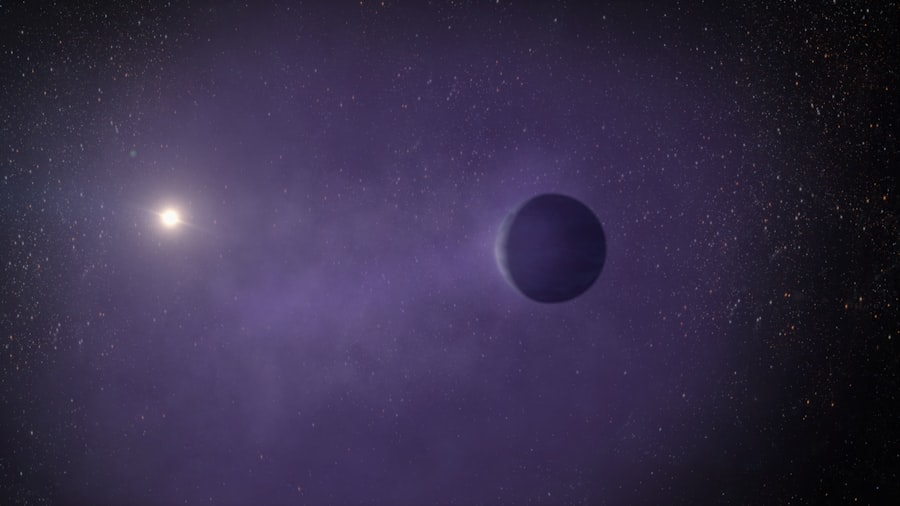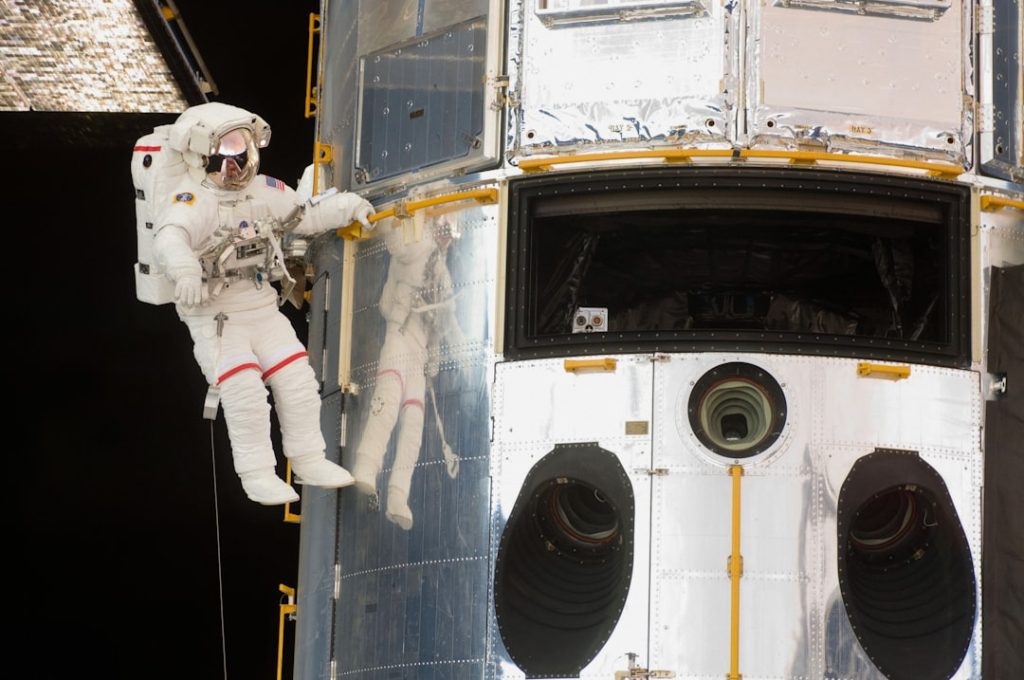The Hubble Space Telescope (HST) stands as one of the most significant achievements in the field of astronomy and space exploration. Launched on April 24, 1990, aboard the Space Shuttle Discovery, Hubble has provided humanity with an unprecedented view of the cosmos. Positioned in low Earth orbit, approximately 547 kilometers above the planet’s surface, Hubble is free from the distorting effects of Earth’s atmosphere, allowing it to capture images and data with remarkable clarity and precision.
This unique vantage point has enabled astronomers to observe celestial phenomena that were previously obscured or entirely invisible from ground-based telescopes. Hubble’s design incorporates a 2.4-meter primary mirror and a suite of advanced scientific instruments, including cameras and spectrographs, which allow it to observe a wide range of wavelengths from ultraviolet to near-infrared light. The telescope’s ability to conduct long-term observations has made it an invaluable tool for studying the universe’s most distant objects, as well as nearby celestial bodies.
Over the decades, Hubble has transformed our understanding of the universe, revealing intricate details about galaxies, nebulae, and other astronomical phenomena. Its legacy is not only defined by the stunning images it has produced but also by the wealth of scientific knowledge it has generated.
Key Takeaways
- The Hubble Space Telescope is a powerful tool for observing the universe, providing valuable data for astronomers and scientists.
- Launched in 1990, the Hubble Space Telescope has revolutionized our understanding of the cosmos and continues to make groundbreaking discoveries.
- Hubble’s key contributions include the confirmation of the universe’s expansion, the discovery of new galaxies, and the study of nebulae and exoplanets.
- Hubble’s stunning images of distant galaxies, nebulae, and other celestial objects have captured the public’s imagination and inspired awe and wonder.
- The future of the Hubble Space Telescope and its successors holds promise for even more exciting discoveries and advancements in our understanding of the universe.
History and Development of the Hubble Space Telescope
The conception of the Hubble Space Telescope can be traced back to the early 1940s when astronomer Lyman Spitzer proposed the idea of a space-based observatory. Spitzer recognized that ground-based telescopes were limited by atmospheric interference, which blurred images and restricted observations. It wasn’t until the 1970s that serious planning began for what would eventually become Hubble.
The project was a collaborative effort involving NASA and the European Space Agency (ESA), with the goal of creating a telescope that could operate above Earth’s atmosphere. Construction of Hubble began in 1977, and it was a complex endeavor that involved numerous engineering challenges. The telescope was designed to be serviced in orbit, allowing for upgrades and repairs over its operational lifetime.
However, shortly after its launch, Hubble faced a significant setback: a spherical aberration in its primary mirror caused images to be blurred. This flaw was a major disappointment for scientists and engineers alike, but it also set the stage for one of the most remarkable feats in space history. In 1993, astronauts aboard the Space Shuttle Endeavour conducted a servicing mission that included the installation of corrective optics, which successfully restored Hubble’s vision and allowed it to fulfill its scientific potential.
Key Discoveries and Contributions to Astronomy

Hubble’s contributions to astronomy are vast and varied, encompassing a wide range of discoveries that have reshaped our understanding of the universe. One of its most significant achievements was the determination of the rate of expansion of the universe. By observing distant supernovae and measuring their brightness, astronomers were able to calculate how fast galaxies are moving away from us.
This groundbreaking work led to the discovery that the expansion of the universe is accelerating, a finding that has profound implications for cosmology and our understanding of dark energy. In addition to its role in measuring cosmic expansion, Hubble has provided critical insights into the formation and evolution of galaxies. The telescope has captured detailed images of galaxy clusters, revealing their structure and dynamics.
For instance, Hubble’s observations of the Hubble Deep Field—a small patch of sky—uncovered thousands of galaxies at various stages of evolution, some dating back to just a few hundred million years after the Big Bang. These observations have helped astronomers piece together the history of galaxy formation and evolution over billions of years.
Hubble’s Role in Understanding the Universe’s Expansion
| Year | Discovery |
|---|---|
| 1929 | Edwin Hubble discovers that galaxies are moving away from us, indicating the universe is expanding. |
| 1998 | Hubble Space Telescope data helps confirm the acceleration of the universe’s expansion. |
| 2011 | Hubble’s observations contribute to refining the measurement of the universe’s expansion rate. |
The concept of an expanding universe was first proposed by Edwin Hubble in the 1920s when he discovered a correlation between a galaxy’s distance from Earth and its redshift, indicating that galaxies are moving away from us. This foundational work laid the groundwork for modern cosmology, but it was not until Hubble’s namesake telescope began its observations that scientists could refine these measurements with unprecedented accuracy. By studying distant supernovae—specifically Type Ia supernovae—Hubble provided crucial evidence for an accelerating universe.
The observations made by Hubble have allowed astronomers to measure the Hubble constant, which describes the rate at which the universe is expanding. This constant is essential for understanding various aspects of cosmology, including the age and size of the universe. The data collected by Hubble has led to competing models regarding dark energy, a mysterious force believed to be driving this acceleration.
The implications of these findings extend beyond mere numbers; they challenge our understanding of fundamental physics and raise questions about the ultimate fate of the universe.
Capturing Stunning Images of the Universe
One of Hubble’s most celebrated contributions is its ability to capture breathtaking images of celestial objects. The telescope’s advanced imaging technology has produced some of the most iconic photographs in astronomy, showcasing vibrant nebulae, distant galaxies, and intricate star clusters. These images not only serve as visual marvels but also provide valuable scientific data that help astronomers analyze the composition and behavior of these celestial bodies.
For example, Hubble’s image of the Pillars of Creation—a region within the Eagle Nebula—reveals towering columns of gas and dust where new stars are being born. This stunning photograph not only captivates viewers but also offers insights into stellar formation processes. Similarly, Hubble’s observations of distant galaxies have unveiled intricate structures such as spiral arms and galactic interactions, allowing scientists to study how galaxies evolve over time.
The telescope’s ability to capture such detailed images has made it an essential tool for both scientific research and public engagement with astronomy.
Hubble’s Impact on our Understanding of Galaxies and Nebulae

Hubble has played a pivotal role in advancing our understanding of galaxies and nebulae, two fundamental components of the universe. Its observations have revealed that galaxies come in various shapes and sizes, from spiral galaxies like our Milky Way to elliptical galaxies that appear more rounded. By studying these different types of galaxies, astronomers have gained insights into their formation processes and evolutionary paths.
One notable discovery made possible by Hubble is the existence of galactic mergers—events where two or more galaxies collide and interact gravitationally. These interactions can lead to dramatic changes in a galaxy’s structure and star formation activity. Hubble’s observations have documented numerous examples of such mergers, providing evidence for theories about how galaxies evolve over cosmic time scales.
Additionally, Hubble has explored nebulae extensively, revealing their complex structures and roles as stellar nurseries where new stars are born from clouds of gas and dust.
Future of the Hubble Space Telescope and its Successors
As Hubble continues to operate well beyond its expected lifespan, discussions about its future and potential successors have become increasingly relevant. While Hubble has proven to be remarkably resilient, it is not immune to aging components and technological limitations. NASA has planned for this eventuality by developing next-generation telescopes such as the James Webb Space Telescope (JWST), which aims to complement Hubble’s capabilities by focusing on infrared observations.
The JWST is designed to explore deeper into space than ever before, allowing scientists to study objects that are too faint or distant for Hubble to observe effectively. However, rather than viewing JWST as a replacement for Hubble, many astronomers see it as a complementary tool that will enhance our understanding of cosmic phenomena. The two telescopes will work together to provide a more comprehensive view of the universe, with Hubble continuing to contribute valuable data while JWST pushes boundaries in infrared astronomy.
Hubble’s Contributions to the Search for Exoplanets
In recent years, one of Hubble’s significant contributions has been in the search for exoplanets—planets located outside our solar system. While ground-based telescopes have made strides in detecting exoplanets through methods such as transit photometry and radial velocity measurements, Hubble has played a crucial role in characterizing these distant worlds. Its ability to observe exoplanet atmospheres through spectroscopy has provided insights into their composition and potential habitability.
Hubble’s observations have detected water vapor in the atmospheres of several exoplanets, including WASP-121b—a hot Jupiter located approximately 850 light-years away from Earth. By analyzing light passing through an exoplanet’s atmosphere during transits (when it passes in front of its host star), astronomers can identify chemical signatures that indicate the presence of specific molecules. These findings are vital for understanding whether certain exoplanets may possess conditions suitable for life as we know it.
Through its extensive contributions across various fields within astronomy, from cosmic expansion to exoplanet research, Hubble has solidified its place as an indispensable tool for scientists seeking to unravel the mysteries of our universe. Its legacy will undoubtedly continue to inspire future generations as we strive to explore further into space and deepen our understanding of existence itself.


